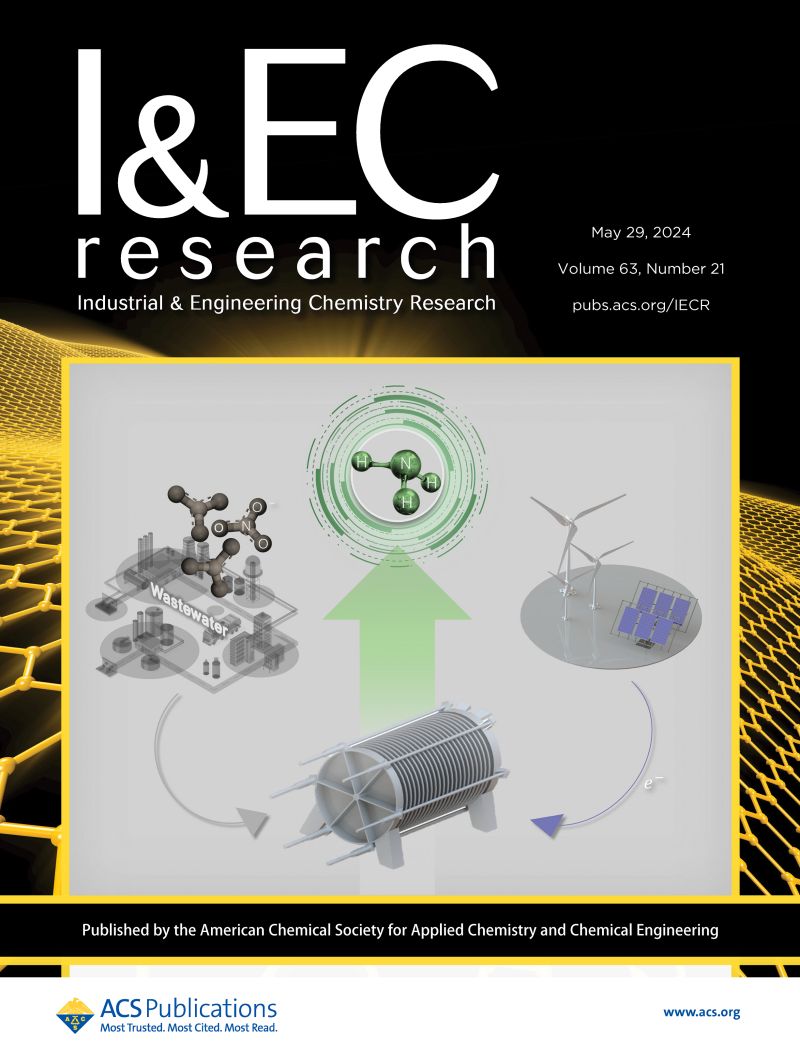Esterification of Levulinic Acid to Ethyl Levulinate over Amberlyst-15 in Flow: Systematic Kinetic Model Discrimination and Parameter Estimation
IF 3.9
3区 工程技术
Q2 ENGINEERING, CHEMICAL
引用次数: 0
Abstract
An automated reactor platform was developed using LabVIEW to conduct preplanned experiments for the identification of a kinetic model for the esterification of Levulinic acid (LA) and ethanol over heterogeneous Amberlyst-15 catalyst. A Single Pellet String Reactor of 1.25 aspect ratio was used for this kinetic study, loaded with 0.1 g of 800 μm catalyst spheres, at flow rates 20–60 μL/min, temperatures 70–100 °C, and LA feed concentrations 0.8–1.6 M. An extensive library of power law, Langmuir-Hinshelwood-Hougen-Watson and Eley–Rideal models, was screened through the application of a general procedure for model discrimination and parameter estimation. The procedure, consisting of seven steps, was applied for the investigation of different design spaces and allowed for the reformulation of models to include temperature-dependent parameters, the former leading to an increase in model identifiability and the latter resulting in enhanced model fitting. The combination of experimental data sets including the addition of the reaction product (water) in the reactor inlet stream and the incorporation of temperature dependence in the adsorption coefficients’ expression led to the identification of two suitable kinetic models out of 28 candidates (a Langmuir-Hinshelwood-Hougen-Watson and an Eley–Rideal model), both of which accounted for the adsorption of water on Amberlyst-15 and fitted the experimental data satisfactorily.

琥珀酸-15催化乙酰丙酸酯化制乙酰丙酸乙酯:系统动力学模型判别及参数估计
利用LabVIEW开发了一个自动化反应器平台,进行预先计划的实验,以确定非均相Amberlyst-15催化剂上乙酰丙酸(LA)和乙醇酯化反应的动力学模型。实验采用长径比为1.25的单颗粒串反应器,负载0.1 g 800 μm催化剂球,流速为20-60 μL/min,温度为70-100℃,LA进料浓度为0.8-1.6 m。通过应用一般的模型判别和参数估计程序筛选了大量的幂律、Langmuir-Hinshelwood-Hougen-Watson和ley - rideal模型。该程序由七个步骤组成,应用于不同设计空间的调查,并允许模型的重新制定,以包括温度相关参数,前者导致模型可识别性的增加,后者导致模型拟合的增强。结合反应器入口流中加入反应产物(水)的实验数据集,并将温度依赖性纳入吸附系数的表达,从28个候选模型中确定了两个合适的动力学模型(Langmuir-Hinshelwood-Hougen-Watson模型和Eley-Rideal模型),这两个模型都能解释Amberlyst-15对水的吸附,并令人满意地拟合了实验数据。
本文章由计算机程序翻译,如有差异,请以英文原文为准。
求助全文
约1分钟内获得全文
求助全文
来源期刊

Industrial & Engineering Chemistry Research
工程技术-工程:化工
CiteScore
7.40
自引率
7.10%
发文量
1467
审稿时长
2.8 months
期刊介绍:
ndustrial & Engineering Chemistry, with variations in title and format, has been published since 1909 by the American Chemical Society. Industrial & Engineering Chemistry Research is a weekly publication that reports industrial and academic research in the broad fields of applied chemistry and chemical engineering with special focus on fundamentals, processes, and products.
 求助内容:
求助内容: 应助结果提醒方式:
应助结果提醒方式:


